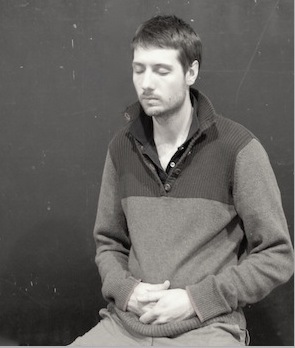Regular meditation lies at the heart of Buddhist training. It provides a unique working ground for integrating current experiences, cultivates the seeds of calm and compassion, shines the clear light of insight and refocuses energy on the path. It offers an extraordinary opportunity, and it shouldn’t be taken for granted. When you start making progress, you can easily get complacent and lazy and lose what you have gained. You need to sustain your Buddhist practice by clarifying your views, concentrating your attention, relaxing deeply held attitudes and connecting with profound spiritual qualities. In meditation, activity and receptivity need to join together in a stream of mindful action – receptively aware of experiences as they arise and actively responding by cultivating higher consciousness. In this way you create the depth and space to see into the nature of things.
You need balance in your engagement and the perspective that allows you to see what needs balancing. You may sometimes go into your meditation in a driving, ambitious manner when the basis for your concentration is weak. If you do that, the heat will immediately disperse, like that of a red-hot stone dropped in water. To develop a stronger basis for sustaining concentration, you must proceed from a general awareness of all aspects of yourself before investing energy in the particular intense awareness of the meditation object. You can call the ground – the broader, generalized awareness – the breadth of the meditation practice and the narrowing of attention on to the object its focus.

Your ability to focus is supported by the breadth of the practice, just as the summit of a mountain stands upon a huge mass of rock. Perhaps this is where the idea of ‘sitting like a mountain’ in meditation comes from. It all starts at the base, with body awareness. You may focus, say, on the breathing process or on the development of metta; but if it’s to lead to full concentration, a broad base of experience has to support it. When you don’t have such a balance, concentration (and any insight reflection you’re engaging with) tumbles over. While it’s ungrounded, it feels as though you are gritting your teeth to hold it all together. That is weak concentration; strong concentration feels relaxed, flexible and stable.
Your ‘breadth’ is how you are as a whole. So you sit mindful of the body and its vitality, feelings and emotions, its mental states and moment-to-moment perception. If these elements are given a place in the practice, your focus will be relaxed and, most important, there will be energy available for concentration. When contacting breadth, the idea is not to get involved with the content of the experience but simply to acknowledge the existence of its elements. If you are overinvolved with breadth, you’ll become distracted. So the breadth needs to be balanced with focus.
People tend to work inappropriately when concerned with results. That’s because this concern can arise from greed or a kind of escapism that is running away from the difficult messages coming from the breadth of your experience. When the dominating idea is to get results, there seems little time to stop and consider what you are actually experiencing. It is right to want success but unhelpful to have too precise an expectation of what that will be. Actually, expectations are always abstractions based on memory – fantasies that don’t exist and never will in the form you imagine. It’s the same story when you try to recapture a previous meditation experience. You should remember that whatever happens in future will be different; and when it happens, it will be happening now.
It is best to cultivate a resolve always to start afresh and to maintain that attitude in the session, allowing new experiences to arise. It is easy to become rigid and create habits, so that you end up just going through the motions. Some meditators sit religiously every morning, doing it in exactly the same way year in, year out. They put themselves through a set sequence of mental actions with no regard for their actual mental state. This is not effective meditation, or mindfulness. It is what the Buddha called the fetter of clinging to rites and rituals. The typical result of inappropriate or wilful effort is pain and mental confusion. Forcing concentration may bring headaches, digestion problems and stiff shoulder muscles, along with mental agitation, anxiety, dullness or a spacey, disconnected condition. Since you are a sensitive creature, phenomena such as these obviously affect your feelings about meditation. They may put you off forever or get you gritting your teeth in an even more rigid attempt to ‘get on with the practice’.
Whenever you realize that you are doing some of these things, just stop for a moment. The mindfulness bell has been struck. Stop and take the time to tune in to what is actually happening and the thoughts and feelings that are involved. Recover a genuine experience of yourself. Stopping the momentum of habit and establishing real mindfulness takes time and patience; but whether such a readjustment in your practice takes hours, days or weeks, it will be worth it. It could teach you a new kind of relaxation in your approach both to practice and to daily life.
You need to look at what these issues are pointing to more broadly. In this case, they seem to be saying that you could do with more richness and colour in your life. All of us need inspiration, a more imaginative ingredient, in our practice and our life. You can find it in thoughtful and well-written literature, making or enjoying art, playing or listening to music, meeting people, spending time alone, walking in nature or whatever keeps the wellsprings flowing.